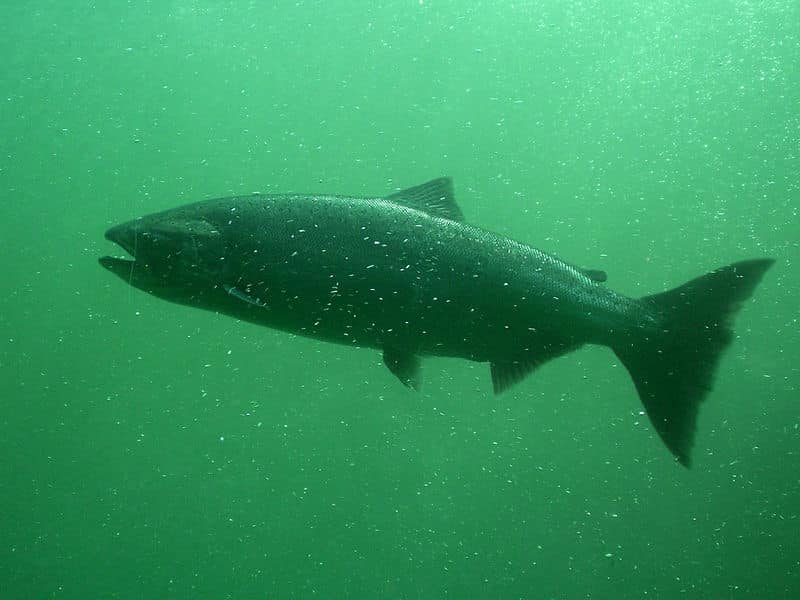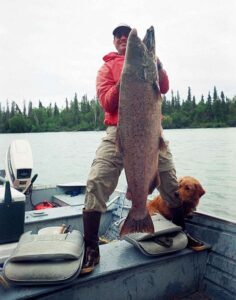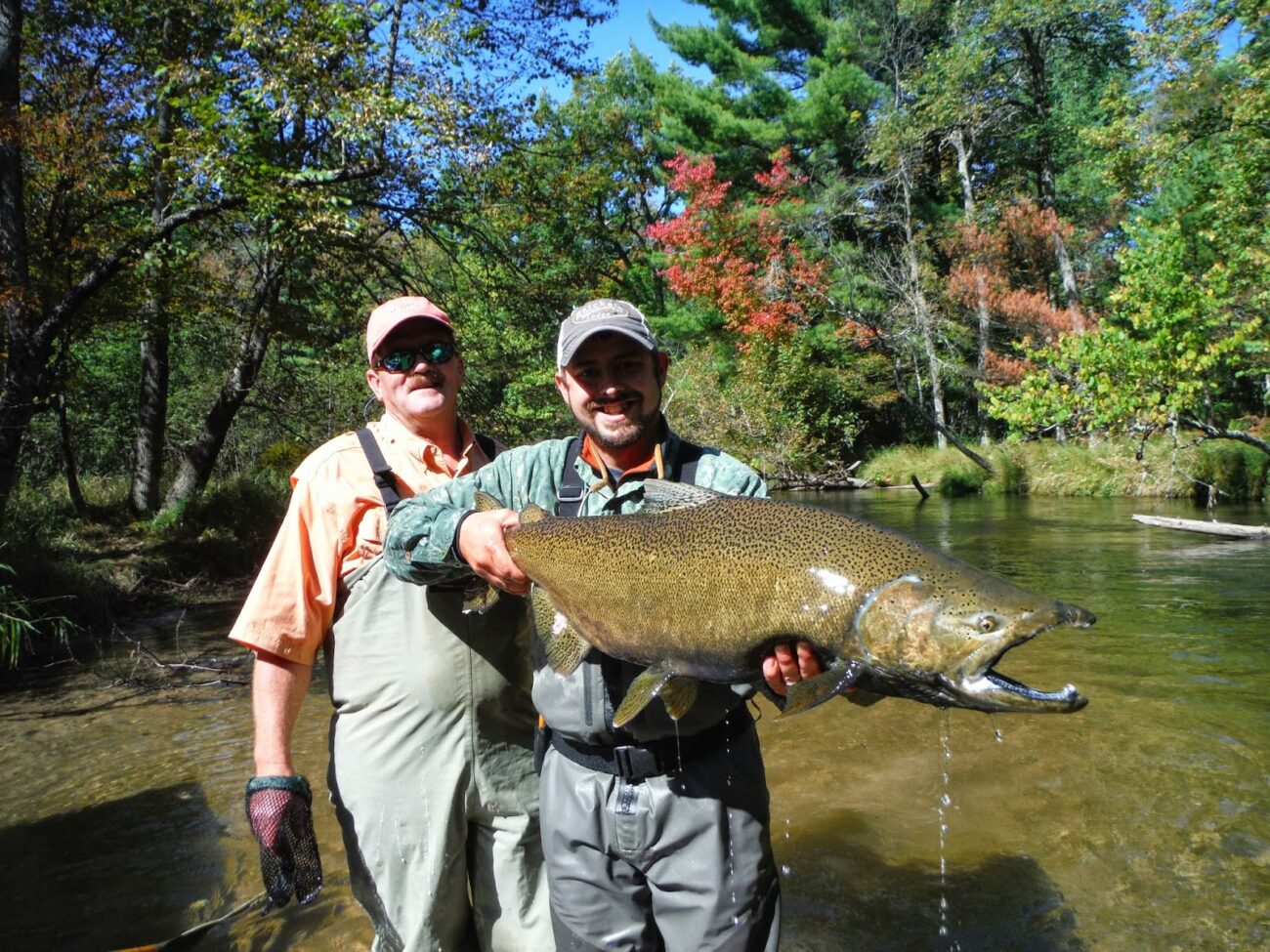This post was last updated on July 31st, 2021 at 10:43 pm
What is King Salmon Fish?
The King Salmon, also known as the Chinook Salmon, is one of the most common and most popular fish in the Pacific, with dozens of Alaskan charters dedicated to catching them. Here’s everything you might want to know about the King Salmon.

Where Do King Salmon Live?
King Salmon can be found up and down the Pacific coast, all the way from Kotzebue Sound, Alaska, in the north, to Santa Barbara, California in the south. They don’t only live in the ocean, though: they can be found in rivers, streams, and estuaries leading back to the Pacific. King Salmon thrive in freshwater as well as saltwater, making them a very versatile fish.
Something most people don’t know about King Salmon is that they are also native to Asia! They can be found in rivers from northern Japan to Siberia. More recently, humans have introduced them to waters in New Zealand and the Great Lakes.
King Salmon Size

There’s a reason they aren’t just “prince” salmon—kings are some of the largest salmon in the ocean. They generally range from 20 to 50 pounds in weight, and are three to four feet long. Some kings are smaller (10 to 15 pounds at their smallest) and some can get absolutely gigantic, pushing 100 pounds! The world record for largest king salmon ever caught is 126 pounds. That’s the size of a human!
What Does the King Salmon Fish Look Like?
The King Salmon is a beautiful fish with a blue and green back and head, silvery sides, a white belly, and black spots on its back and tail. The tail also has silvery streaks in it. More rarely, the fish can have red and purple tints on their backs and sides. Their mouths are generally dark purple or black.
King Salmon Spawning Habitat
Kings spawn in fresh water. For eggs to develop properly, the water must be cool and clean, as well as oxygenated and free of sediment. It’s also essential to have vegetation cover so that the young fish have places to hide and shade to keep the water temperature low. Estuaries, therefore, make the ideal spawning spot, since the wetlands around estuaries filter out pollutants.
King Salmon Life Cycle
This type of salmon is unique in as far as it spawns only once in its lifetime. On average, King salmon spend three to four years in the ocean (though sometimes it’s as little as one or as much as eight) before returning to fight their way upstream to spawn at their home rivers. It’s often a long, grueling journey of thousands of miles, much of it spent battling currents and fishermen. The salmon that reach their spawning grounds make up for the ones that don’t make it by laying about 15,000 eggs each. Of course, only a fraction of these will result in salmon that reach adulthood themselves, but it’s still a decent turnover rate.
Once the eggs hatch, the salmon will do one of two things. Ocean-type king salmon head for the Pacific during their first year of life. Stream-type kings spend a year or two in freshwater before swimming out to the deep sea. They spend about five years in the ocean before returning to spawn and dying.

King Salmon Feeding Habits
King salmon’s favorite ocean foods are starfish, jellyfish, planktonic diatoms, copepods, kelps, and seaweeds. During the time they spend in rivers, king salmon feed primarily on insects and crustaceans such as shrimp, krill, and crabs. Older, bigger salmon in the ocean and rivers also tend to feed on other fish.
Population Problems
Commercial fisheries have to be careful to not catch too many wild salmon as they’re trying to spawn; otherwise there will be fewer and fewer of the fish each year. Already nine sub-types of King Salmon are listed as endangered or threatened. It’s also crucial to keep oceans and salmon spawning tributaries as clean and un-polluted as possible.
Fun Facts
• The King Salmon has historically played an integral part in some Native American tribes’ culture and spirituality. Some still celebrate “first salmon ceremonies” annually.
• Lewis and Clark ate King Salmon on their famous expedition and described it as the most delicious fish they’d ever had.
• The King Salmon is the state fish of Alaska.
• The Chinook Salmon (which is the same as a king) is the state fish of Oregon.
